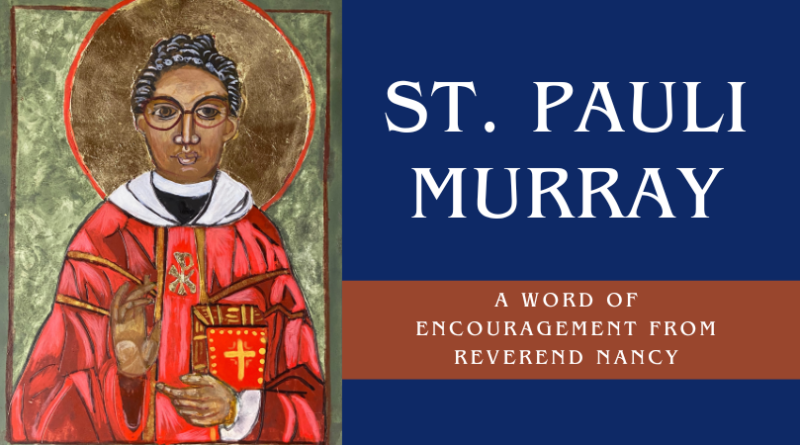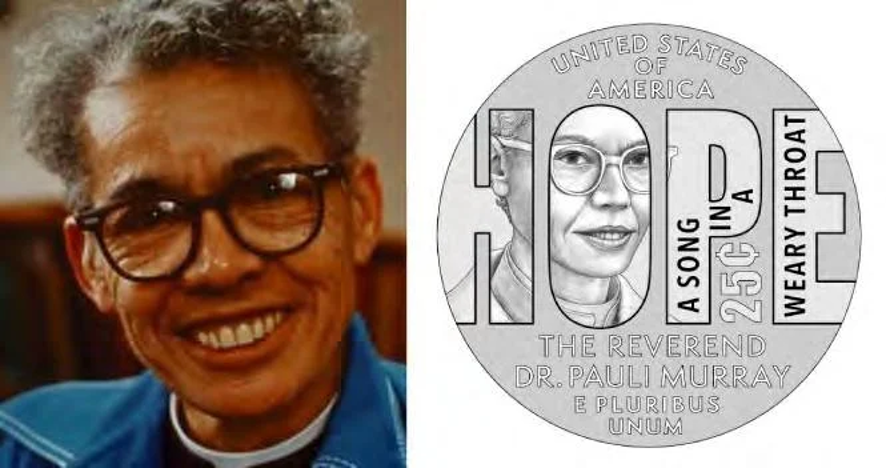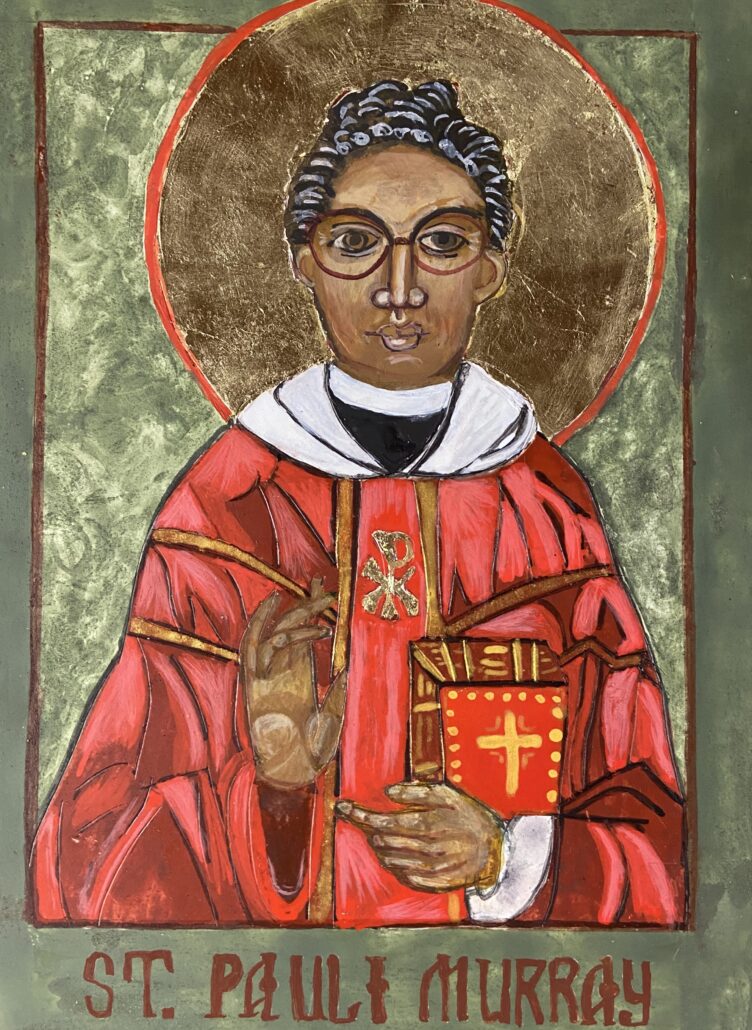St. Pauli Murray
How many Episcopal priests have appeared on a US coin? One!
As part of the American Women Quarters, the mint is issuing five quarters each year from 2022 to 2025. The Reverend Dr. Pauli Murray, the first Black woman ordained in the Episcopal Church, was a lawyer, civil rights activist, scholar, professor, and writer. Scholars now understand that Pauli was “gender-nonconforming,” and that may also be a first for US coins. The quarter was struck in 2024 with a design that features HOPE and “A Song in a Weary Throat,” her autobiography.
Hope is a good choice to memorialize Pauli Murray. She was indefatigable in challenging the twin evils of “Jim and Jane Crow” (racism and sexism), which she had encountered in her own life. For example, she was turned down from UNC-Chapel Hill for being black and from Harvard for being a woman. Through her work, Pauli helped shape the 1954 Brown v. Board of Education Supreme Court ruling (having advanced that “separate could never be equal” in her final law school paper, a different approach than earlier arguments, which had focused on equality). Her book on US segregation laws by state was an invaluable resource for understanding racial laws in the pre-Internet era. Murray was one of the founders of NOW, the National Organization for Women. Ruth Bader Ginsburg credited Murray’s arguments in her brief for the 1971 Reed v. Reed case that prompted the US Supreme Court to ban gender discrimination under the 14th Amendment.
In 1973, Murray was made a postulant in the Diocese of Massachusetts. She attended both General Theological Seminary and Virginia Theological Seminary, graduating from General in 1976. Pauli was present at the 1974 “irregular” ordination of eleven women in Philadelphia. After the ordination, she challenged the crucifer, Senior Warden Barbara Harris, to pursue ordination, which Harris had declined due to age (she was 44). Harris would later become not only the first Black woman to be consecrated as bishop, but also the first woman to be consecrated bishop in the Anglican Communion. Following the 1976 General Convention approval of the ordination of women, Pauli Murray became the first African-American woman ordained to the Episcopal priesthood. After ordination, at the invitation of The Reverend Peter Lee, then rector of the Chapel of the Cross in Chapel Hill, North Carolina, Pauli celebrated her first Eucharist in the same sanctuary where her grandmother had been baptized as a slave in 1854.
On Sunday, February 13, in the little chapel where my Grandmother Cornelia had been baptized more than a century earlier as one of “Five Servant Children Belonging to Miss Mary Ruffin Smith,” I read the gospel from an ornate lectern engraved with the name of that slave-owning woman who had left part of her wealth to the Episcopal Diocese of North Carolina. A thoroughly interracial congregation crowded the chapel, and many more stood outside until they could enter to kneel at the altar rail and receive Communion. There was great irony in the fact that the first woman priest to preside at the altar of the church to which Mary Ruffin Smith had given her deepest devotion should be the granddaughter of the little girl she had sent to the balcony reserved for slaves. But more than irony marked that moment. Whatever future ministry I might have as a priest, it was given to me that day to be a symbol of healing.All the strands of my life had come together. Descendant of slave and of slave owner, I had already been called poet, lawyer, teacher, and friend. Now I was empowered to minister the sacrament of One in whom there is no north or south, no black or white, no male or female—only the spirit of love and reconciliation drawing us all toward the goal of human wholeness. – From “A Song in a Weary Throat,” p. 426-7
Pauli was always “ahead of her time” and frequently frustrated at the slow pace of change. In her later years, following ordination, she found a great deal of peace in caring for those who were sick, following Christ’s admonition in Matthew 25.
At General Convention in 2012, Pauli Murray was added to the calendar of saints for the Episcopal Church to be observed on July 1. In 2016, Murray’s childhood home in Durham, NC, was named a National Historic Landmark.
St. Pauli Murray Icon written by Deacon Jackie Whitfield.



